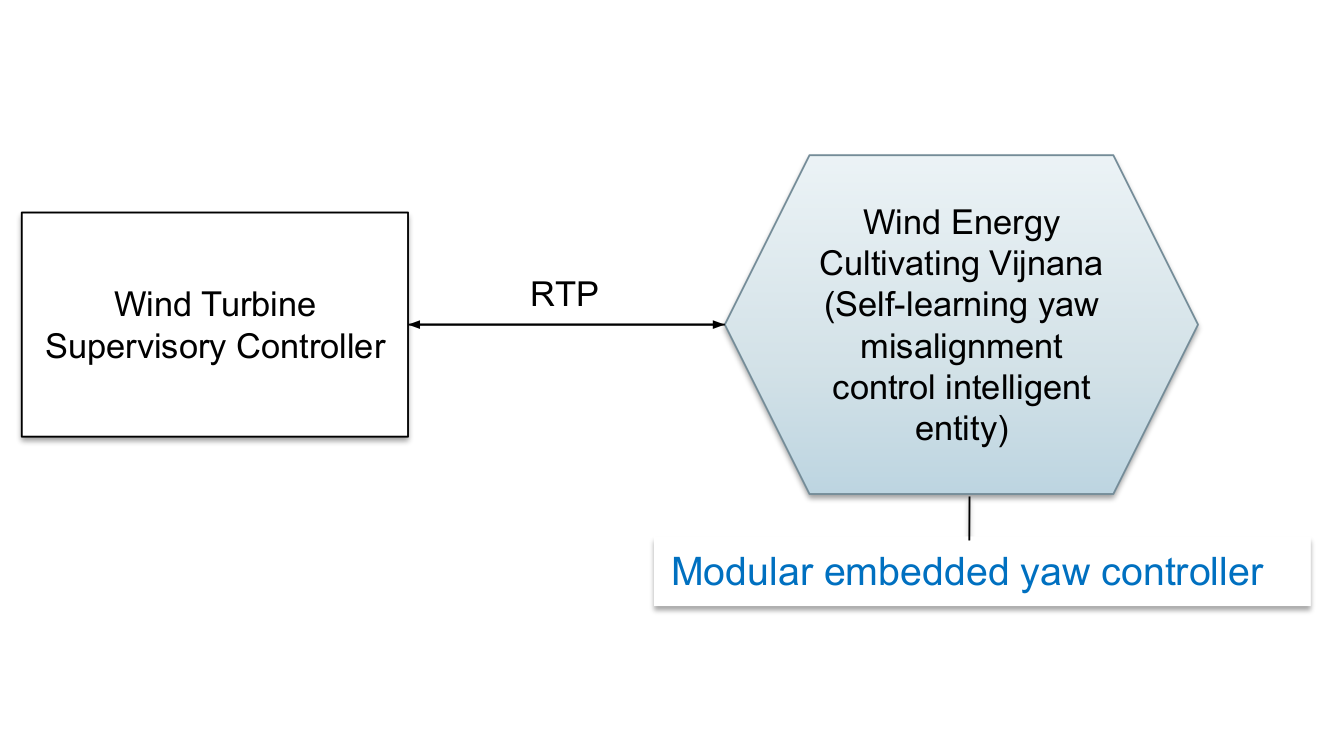Wind Energy Cultivating Vijnana
Introduction of self-learning yaw misalignment control intelligent entity, in MEE 2021.

Technical approaches to the wake challenge
caused by very complicated metocean conditions in the wind turbine for offshore
Wake caused by a wind farm decreases wind energy capturing efficiency, furthermore, in offshore, the wake with complicated metocean conditions reduces wind energy capturing efficiency much more. Via controlling yaw more precisely, the wake can be reduced, so the wind energy capturing efficiency can increase. There is a major factor of flow deflection among yaw controlling factors, and the flow deflection prediction model is non-stationary by the wake caused by a wind farm. Moreover, another major factor of assembly angle is also a non-stationary factor. The flow deflection prediction model’s non-stationary characteristics can be solved via self-learning based on deep reinforcement learning, and the assembly angle’s non-stationary characteristics can be solved via assembly angles estimated by differential Kalman filtering.
Refer to the PCT patent: Kalman Filter and Deep Reinforcement Learning based Wind Turbine Yaw Misalignment Control Method
Development History
The Korean “Kalman filter and deep reinforcement learning based yaw misalignment control method” patent (patent application number: 10-2020-0186882 ) was applied to Korean Intellectual Property Office in 2020.
WECV was developed using Tensorflow Keras and Flask and was tested with OpenFAST with wind vane with one-month operation data in 2022.
Using NREL’s Flatirons M2 weather data, the SCADA data of one year was generated in 2022.
Using the SCADA data of one year, Differential Kalman filer and RNN(LSTM) based yaw flow deflection prediction model was trained and the performance was evaluated in 2023.
Based on PCT, the patent was applied to USA(Application No. 18/266835 ) and India(Application No. 202317049179 A) in 2023.
WECV will be tested with the SCADA data of one year, and the power curve performance will be estimated as POC until 2024.